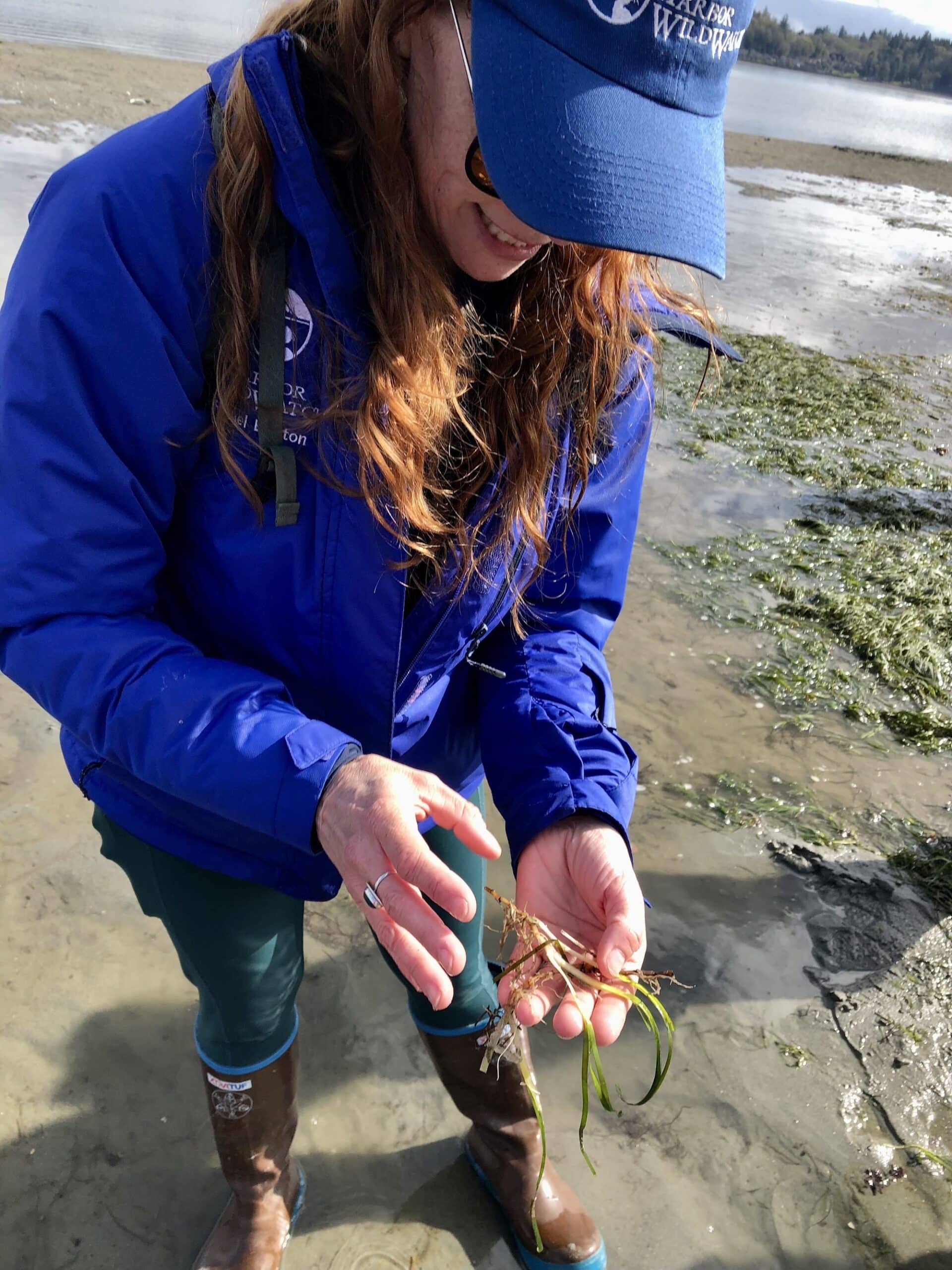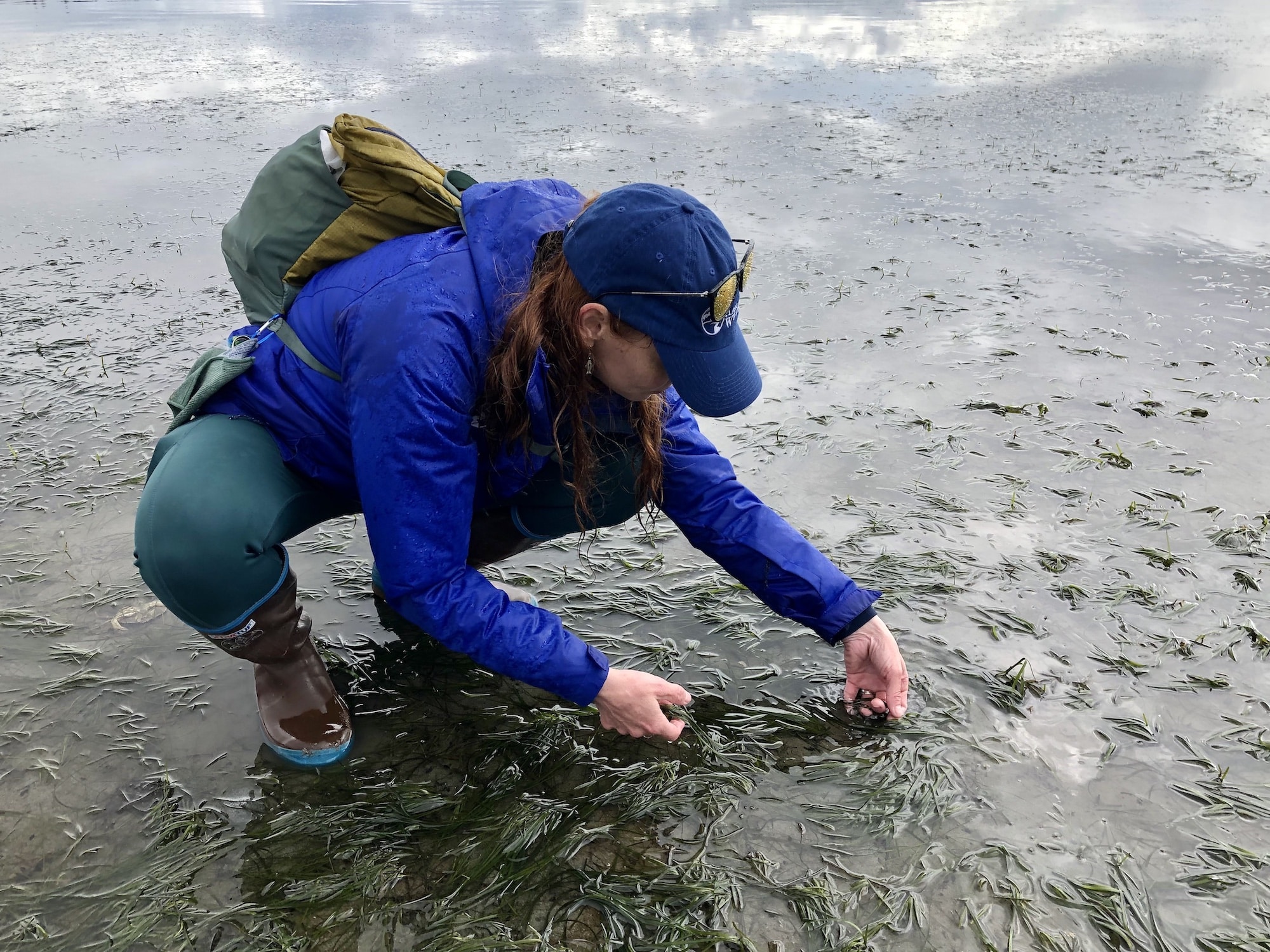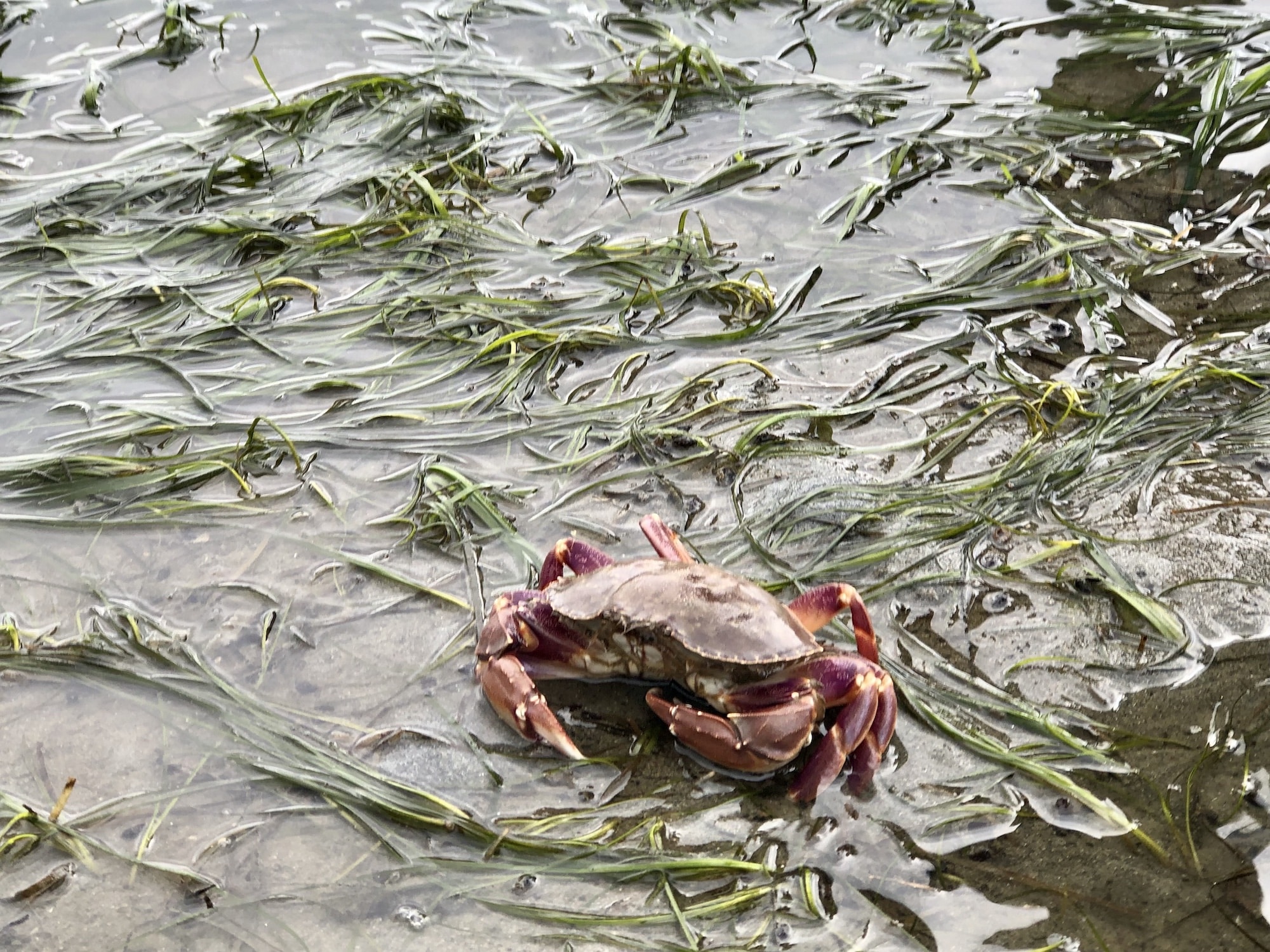Community Environment Government
Pierce County receives grant to map eelgrass
Scientists regard eelgrass as the coal-mine canary of nearshore health.
As the yellow songbird’s death warned miners of poisonous gases, eelgrass condition serves as a vital sign of coastal wellness because of how quickly it reacts to changes in water quality. Shifts in the amount and location of eelgrass are likely to reflect changes in environmental conditions that can affect the many species that depend on eelgrass habitat. As Puget Sound’s most common seagrass goes, so goes the neighborhood.
To understand how well eelgrass is persevering, a baseline must be set. Pierce County intends to map its abundance along county shorelines using a $500,000 grant announced last month, said Planning and Public Works spokeswoman Michelle Kircher. Habitat Strategic Initiative Lead, devoted to improving the health of Puget Sound shorelines and estuaries, provided the funding.

Harbor WildWatch’s Rachel Easton describes how eelgrass is not a seaweed but grows like land plants, with leaves, roots, flowers and pollen. Photo by Ed Friedrich
Pierce County will partner with the state Department of Natural Resources, which has monitored eelgrass since 2000. DNR’s Nearshore Habitat Program will hire a crew and research vessel to acquire data that DNR biologists will analyze, Kircher said.
Boat needed as some grass never surfaces
During extreme low tides, eelgrass can be seen blanketing beaches in green. But much is subtidal, growing below the low tide line to more than 30 feet deep. Contractors must deploy a boat to tow underwater video equipment. They’ll survey 180 sites, which encompasses nearly all the county’s shoreline, Kircher said.
The research vessel will track perpendicular to the shore during high tides to reach the shallowest and deepest extents of the eelgrass. The equipment also records location and depth.
The county mapped critical salmon habitat using a different method in 2003. That effort also tried to also establish a baseline for eelgrass, but has done little since then, Kircher said. That research can be compared to new data to determine changes over the past decade.
Pierce County will use the data to determine whether further shoreline protections are necessary and work with experts, stakeholders and the public on a 2029 Shoreline Master Plan update that will apply the information to manage resources and shoreline development.
The county already enforces strict waterfront regulations. Setbacks are in place for buildings and septic systems. Pierce County began enforcing state requirements for septic inspections every three years in environmentally sensitive areas, such as Key Peninsula, in 2021. It eventually intends to expand them countywide.
New residential docks and piers can’t be built on 128 miles of Pierce’s 180 miles of shoreline. An amendment to the Shoreline Master Program in December 2023 added 52 new miles to prevent loss of critical habitat for forage fish, migrating salmon fry and eelgrass. The changes put much of the west sides of Fox Island and Key Peninsula and most of Henderson Bay off limits.
Threats include sewage, fertilizer
Eelgrass thrives on sunlight and relatively cool water, but water is warming up because of climate change. Untreated sewage and fertilizer runoff feed algae growth that coats the plants or water surface, restricting the light available for photosynthesis and plant survival.
Globally, nearly 30% of seagrass habitat has vanished since the 1800s, according to the National Park Service. Studies show a continuing loss of as much as 7% per year. The total amount of eelgrass in Puget Sound has remained relatively stable since the start of the monitoring program, though it didn’t meet Puget Sound Partnership’s target of a 20% increase in area by 2020, according to DNR.
DNR began restoration efforts in 2011, said Jeff Gaeckle of the Nearshore Habitat Program. It developed a model to determine the most suitable beaches to plant, then made widespread test transplants. The ones that performed the best were at Joemma Beach State Park on the Key Peninsula and elsewhere around South Sound, Gaeckle said. It has since transplanted larger plots at Joemma that continue to grow and expand.

Harbor WildWatch’s Rachel Easton displays a bay pipefish during a beach walk at Purdy spit Wednesday. Photo by Ed Friedrich
Overall, the program has transplanted about 400,000 eelgrass shoots across 170 test sites and 25 large-scale sites. Even with low survival rates, once a transplanted site becomes established the shoot count grows quickly through branching and reproduction from seeds, Gaeckle said.
“For example, the last estimates of shoots counted at Joemma Beach State Park was in excess of 1 million shoots, and that’s from approximately 120,000 shoots transplanted over nine years,” he said.
Eelgrass grows in underwater meadows in muddy or sandy tidal areas of Puget Sound. It looks much like lawn grass except its slender blades can reach 4 feet tall. It’s named for the wavy leaves that flutter in the water like eels.
Different than seaweed
As opposed to seaweeds, which are a type of algae, eelgrass is an aquatic plant with the same attributes as land plants — pollen, root stalks, roots, leaves and flowers.
The underwater grasslands offer diverse food webs and create complex habitat for fish and wildlife. They provide nursery grounds for forage fish that sustain salmon. The blades offer a surface for sticky herring eggs, and the algae coating them supplies food for small organisms. The plant beds forestall erosion by trapping sediments and slowing down waves or currents. Eelgrass also contributes to keeping carbon out of the atmosphere.
Staff at Harbor WildWatch, a Gig Harbor-based environmental education organization, know the local beaches and their inhabitants as well as anyone. During a community beach walk last week at the Purdy spit, Education Director Rachel Easton described eelgrass and some of the critters that rely on it.

Harbor WildWatch’s Rachel Easton compares the two types of eelgrass found at the Purdy spit. Photo by Ed Friedrich
The grass didn’t reveal itself until the Henderson Bay tide receded into negative numbers. First to appear was Zostera japonica. It is believed to have been introduced with a shipment of Japanese oysters in the first half of the 20th century. Japanese eelgrass is a small species and usually grows on the upper edge of seagrass beds, typically on mudflats exposed at low tide.
Emerging from deeper water was the native species, Zostera marina, which has thicker and longer blades than the foreigner. The tide continued to ebb, leaving a blanket of green eelgrass in its place. Splashes within it divulged several types of crabs, particularly Graceful crabs. They resemble Dungeness crabs but have white-tipped claws and don’t grow large enough to eat.
A rich habitat
Chum salmon fry swim among the eelgrass, presumably hatched in December in Burley Creek, Purdy Creek or any number of smaller nearby streams. They’ll hide out in the blades, trying not to get eaten while building strength for a run to the ocean.
“One of the benefits of eelgrass is it provides a migrating corridor for out-migrating salmon,” Easton said.
Easton spotted a bay pipefish nearly invisible against its background and picked it up to show her band of about a dozen curious followers. It looked like a thin, footlong stick with an alligator face. It lives among the eelgrass where its long greenish body blends in with the swaying blades.
The bay pipefish is Puget Sound’s version of a seahorse, Easton said. Males tend the eggs deposited by their female partners into specialized pouches and disperse babies into the eelgrass.
Easton pointed out another inhabitant reliant on camouflage swimming in a shallow pool — tiny, green eelgrass shrimp.
Other good eelgrass beaches to visit are Joemma and Penrose Point state parks, Sunrise Beach Park near Gig Harbor and Titlow Beach in Tacoma, Easton suggested. People can also help survey eelgrass through a Harbor WildWatch participatory science program.

